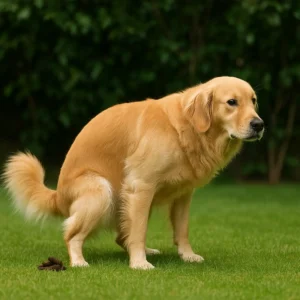Grooming a dog requires a variety of tasks, the first of which is keeping their nails in good shape. Regular nail trimming determines your dog’s overall health as excessively long nails can cause pain, discomfort and even serious medical issues.
Yet, many pet owners feel anxious about clipping their dog’s nails. In this article, you’ll learn how to cut dog nails correctly and safely.
Why cutting your dog’s nails is important
Besides their looks, trimming your dog’s nails improves their health. Long nails might create:
- Pain and discomfort: Overgrown nails could affect your dog’s stride and create joint pain, thereby making walking difficult.
- Injury: Too long nails are more likely to break or split, therefore damaging them and maybe creating an infection.
- Posture issues: Bad posture acquired by long-nailed canines might lead to long-term musculoskeletal issues.
- Damage to surfaces: During play, long nails can potentially damage your furniture, carpeting, and even your skin.
Regularly trimming your dog’s nails not only prevents these problems but also ensures their overall health and well-being.
Understanding your dog’s nails
Starting cutting will be easier if you know the arrangement of your dog’s nails:
- The quick: Every nail has a little area known as the quick, which holds blood vessels and nerves. Cutting right in the quick could cause bleeding and pain.
- The nail tip: The part you cut off the nail is the tip. That is more space than the rapid one covers.
Safe cutting calls on knowledge of where the quick is and how to avoid it.
Tools you’ll need
To trim your dog’s nails safely, you’ll need a few basic tools:
- Nail clippers: Get some quite excellent dog nail clippers. Two among the various are scissor-style and guillotine-style clippers.
- Styptic powder: Should you cut the quick unintentionally, stop the bleeding using styptic powder.
- A file or grinder: After dog nail clipping, you can smooth the edges using a nail file or grinder.
- Treats: Treats seek for positive reinforcement, particularly in relation to keeping some snacks ready to treat your dog for great behaviour during the cutting session.
Step-by-step guide to trimming your dog’s nails
1. Prepare your dog
Let your dog relax first. Find a quiet area your dog finds safe. Gently holding their paw and moving the clippers over their nails will help them become habituated to the sensation. Treats will help to create a solid bond.
2. Identify the quick
Search among your dog’s nails for the quick. In lighter-coloured nails, the quick may appear as a pinkish or reddish section. Dogs with darker nails could find it more challenging and hence call more for attention. Cut a little bit at a time to avoid crossing the fast.
3. Trim the nails
Lean the clippers forty-five degrees towards the nail. Cut very sparingly to avoid crossing the quick. If your dog’s nails are rather long, consider cutting them in multiple sessions to permit the quick to recede gradually.
4. Use a nail file or grinder
After trimming your dog’s nails, smooth them out using a file or nail grinder. This helps stop discomfort and nail dragging on surfaces, which can damage objects.
5. Reward your dog
When you have finished trimming all of her nails, treat your dog and leave lots of remarks. Positive reinforcement will help to simplify the next nail clipping.
Read also: How to stop dog barking in seconds
Tips for a stress-free nail trimming experience
- Start young: If at all possible, start cutting your dog’s nails when a puppy. This makes early-stage process modification possible.
- Stay calm: Dogs can smell your nervousness; therefore, try to remain composed and patient all through the process.
- Break it up: If your dog is rather afraid, consider clipping one or two nails at a time.
- Seek help if needed: If you are unsure or worried about trimming your dog’s nails, see a veterinarian or professional groomer.
What to do if you cut the quick
While mishaps do occur, if you cut the quick by mistake your dog will bleed. Calmer down. On the affected nail, dust styptic powder will help to halt bleeding. Calm your dog and treat them to help them to get over their fear. See your veterinarian should the bleeding not stop.
When to seek professional help
Some dogs have particularly sensitive nails that cover the quick and are rather black. It might be wise occasionally to let the experts handle nail trimming. A skilled veterinarian or professional groomer equipped with the necessary instruments can safely and properly clip your dog’s nails.
Conclusion
Nail trimming is an essential part of your dog’s grooming routine. Although initially it may seem tough, with the right tools, skills, and patience you can keep a reasonable length on your dog’s nails. Remember that good nail care improves your dog’s comfort and well-being, thereby allowing them to lead an active and happy life. Try it; with practice, you and your pet will be nail cutting experts!






